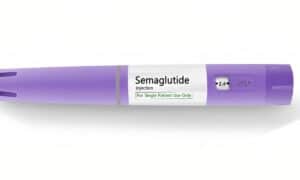
How To Inject Semaglutide
How To Inject Semaglutide. Semaglutide Injection is a medication used to treat type 2 diabetes. It belongs to a class of drugs called glucagon-like peptide-1 (GLP-1) receptor agonists, which work by increasing insulin production and reducing glucose production in the liver. Understanding the proper way to administer this medication is crucial for its effectiveness and your overall health.
It is important to understand the injection instructions for Semaglutide because it ensures that you are receiving the correct dosage and using the medication safely. Proper administration of Semaglutide Injection can help lower blood sugar levels, promote weight loss, and reduce the risk of cardiovascular disease.
Benefits of Semaglutide Injection
One of the main benefits of Semaglutide Injection is its ability to lower blood sugar levels. By increasing insulin production and reducing glucose production in the liver, this medication helps regulate blood sugar levels and prevent spikes and crashes. This can lead to better overall diabetes management and reduce the risk of complications.
Another benefit of Semaglutide Injection is weight loss. Many people with type 2 diabetes struggle with weight management, and Semaglutide can help address this issue. Studies have shown that Semaglutide can lead to significant weight loss in individuals with type 2 diabetes, making it an attractive option for those looking to improve their overall health.
In addition to lowering blood sugar levels and promoting weight loss, Semaglutide Injection has also been shown to reduce the risk of cardiovascular disease. This is especially important for individuals with type 2 diabetes, as they are at a higher risk for heart disease. By improving blood sugar control and promoting weight loss, Semaglutide can help reduce the risk of heart attacks, strokes, and other cardiovascular complications.
Understanding the Dosage of Semaglutide Injection
Semaglutide Injection is available in different dosages, and it is important to follow the prescribed dosage given by your healthcare provider. The dosage will depend on various factors, including your individual needs, medical history, and response to the medication.
It is crucial to follow the prescribed dosage because taking too much or too little of Semaglutide can have negative effects on your health. Taking too much can lead to low blood sugar levels (hypoglycemia), while taking too little may not effectively control your blood sugar levels. It is important to communicate with your healthcare provider if you have any concerns or questions about your dosage.
Preparing for Semaglutide Injection
Learn how to inject semaglutide. Before administering Semaglutide Injection, it is important to gather all the necessary supplies. This includes the medication itself, a new needle, an alcohol swab, and a sharps container for safe disposal of used needles. Having all these supplies ready beforehand will make the injection process smoother and more efficient.
Properly storing the medication is also crucial for its effectiveness. Semaglutide Injection should be stored in the refrigerator between 36°F and 46°F (2°C and 8°C). It should be kept in its original packaging and protected from light. It is important to check the expiration date before using the medication, as expired medication may not be as effective.
Injection Site and Technique for Semaglutide Injection

The Science Behind Semaglutide
Semaglutide Injection is typically administered once a week, and there are recommended injection sites for this medication. The most common injection sites are the abdomen (at least 2 inches away from the belly button) and the front of the thighs. It is important to rotate injection sites to prevent skin irritation or lumps from forming.
How To Get Your Semaglutide Dose Ready For Injection
Following are some helpful instructions for getting your semaglutide dose ready for injection:
- Take off the top seal of the vial and clean it with an alcohol swab.
- Detach the orange cap from the needle.
- Grip the syringe as you would a pen or dart, and carefully insert the needle straight into the center of the rubber stopper to prevent bending.
- Invert the vial and syringe together so they are upside down.
- Ensure the needle’s tip is submerged in the liquid.
- Draw the plunger back beyond the required dose, then push it up to the exact dosage to eliminate any air bubbles.
- After obtaining the correct amount of liquid, gently remove the syringe from the vial.
Proper technique is also important when administering Semaglutide Injection. Before injecting, clean the injection site with an alcohol swab and let it dry. Pinch a fold of skin at the injection site and insert the needle at a 45-degree angle. Inject the medication slowly and steadily, and then remove the needle. Apply gentle pressure to the injection site with a cotton ball or tissue.
How To Inject Your Semaglutide Dose
Here are some easy to follow instructions for the semaglutide injection:
- Create a firm surface by pinching the injection site.
- Alternate injection sites between the stomach (two inches from the belly button on either side), back of the arm, or thigh.
- Insert the needle into the skin at a 90-degree angle, between the index finger and thumb.
- Push the plunger rod using slow and constant pressure until it reaches the bottom.
- Gently remove the syringe from the skin.
- Dispose of the needle in a sharps container.
Possible Side Effects of Semaglutide Injection

Constipation
Like any medication, Semaglutide Injection can have side effects. Some common side effects include nausea, diarrhea, headache, and hypoglycemia (low blood sugar). These side effects are usually mild and go away on their own. However, if they persist or become severe, it is important to contact your healthcare provider.
Nausea is a common side effect of Semaglutide Injection, especially when starting the medication. It usually improves over time as your body adjusts to the medication. If you experience persistent or severe nausea, it is important to contact your healthcare provider.
Diarrhea is another common side effect of Semaglutide Injection. It is important to stay hydrated and contact your healthcare provider if you experience persistent or severe diarrhea.
Headache is a less common side effect of Semaglutide Injection. If you experience persistent or severe headaches, it is important to contact your healthcare provider.
Hypoglycemia (low blood sugar) can occur if the dosage of Semaglutide is too high or if it is taken with other medications that lower blood sugar. Symptoms of hypoglycemia include shakiness, dizziness, sweating, confusion, and hunger. It is important to monitor your blood sugar levels regularly and contact your healthcare provider if you experience symptoms of hypoglycemia.
Interactions with Other Medications and Foods
Semaglutide Injection may interact with certain medications and foods, so it is important to be aware of these interactions. Some medications that may interact with Semaglutide include insulin and other medications that lower blood sugar levels. It is important to inform your healthcare provider about all the medications you are taking to avoid any potential interactions.
There are also certain foods that may affect the absorption and effectiveness of Semaglutide Injection. High-fat meals can slow down the absorption of Semaglutide, so it is important to avoid consuming large amounts of fatty foods before or after taking the medication. It is best to follow a balanced diet and consult with a registered dietitian for personalized dietary recommendations.
Storage and Disposal of Semaglutide Injection
Proper storage of Semaglutide Injection is important to maintain its effectiveness. The medication should be stored in the refrigerator between 36°F and 46°F (2°C and 8°C). It should be kept in its original packaging and protected from light. It is important to check the expiration date before using the medication, as expired medication may not be as effective.
Safe disposal of used needles and medication is also crucial for the safety of yourself and others. Used needles should be placed in a sharps container immediately after use. The sharps container should be kept out of reach of children and pets. When the sharps container is full, it should be sealed and disposed of according to local regulations. Unused or expired medication should be disposed of properly as well, following local guidelines or consulting with a pharmacist.
Tips for Remembering Semaglutide Injection Instructions

Injectable Weight Loss Medications
Learn how to inject semaglutide. Remembering to take Semaglutide Injection on time and following the injection instructions can be challenging, especially if you have a busy schedule. Here are some tips to help you remember:
1. Set reminders: Use alarms, phone notifications, or calendar reminders to remind yourself when it’s time to take your medication.
2. Keep a schedule: Establish a routine for taking your medication, such as taking it at the same time every week. This can help make it a habit and easier to remember.
3. Ask for help if needed: If you have trouble remembering or administering the medication, don’t hesitate to ask a family member, friend, or healthcare provider for assistance. They can help remind you and ensure that you are taking the medication correctly.
Conclusion: How To Inject Semaglutide
In conclusion, Semaglutide Injection is a medication that can help individuals with type 2 diabetes manage their blood sugar levels, promote weight loss, and reduce the risk of cardiovascular disease. Understanding the injection instructions and following them correctly is crucial for the effectiveness and safety of the medication.
By properly preparing for the injection, understanding the dosage, administering the medication correctly, and being aware of possible side effects and interactions, you can take control of your health and effectively manage your diabetes with Semaglutide Injection. Remember to store the medication properly and dispose of used needles and medication safely.
If you have any questions or concerns about Semaglutide Injection or its administration, it is important to consult with your healthcare provider. They can provide personalized guidance and support to help you effectively manage your diabetes and improve your overall health.






